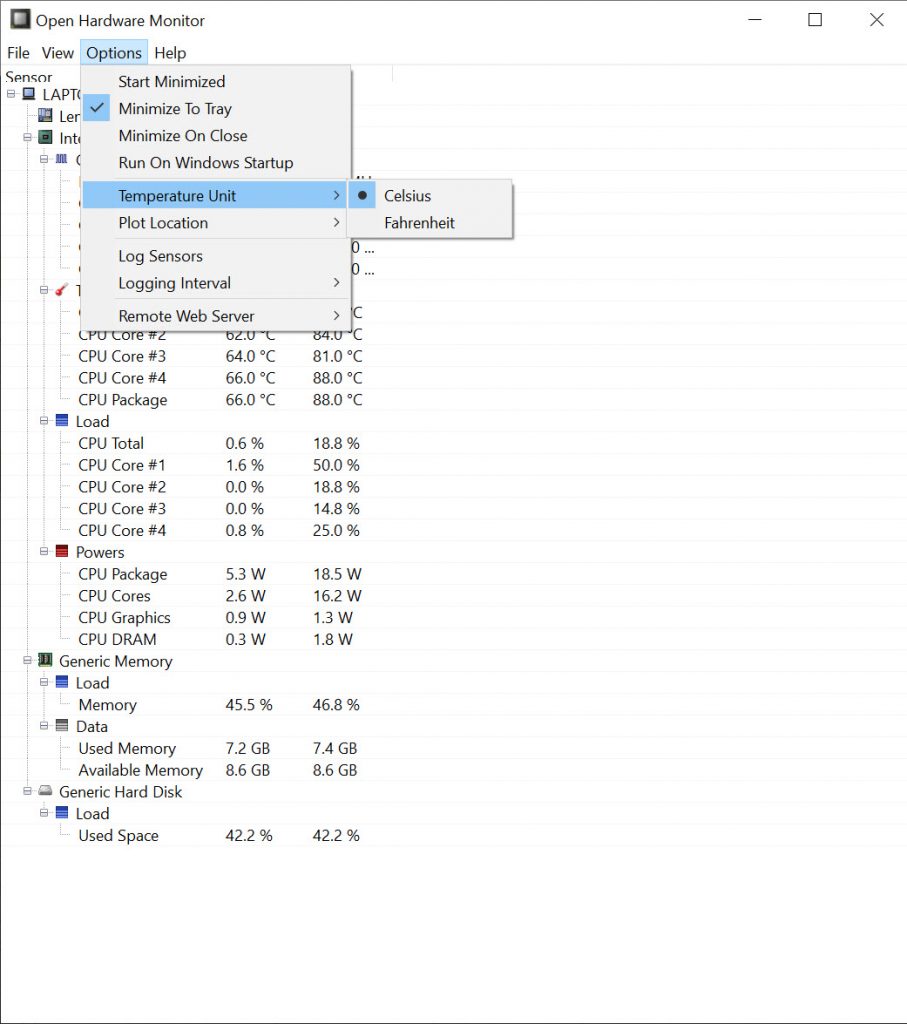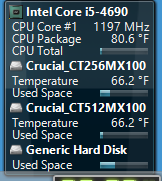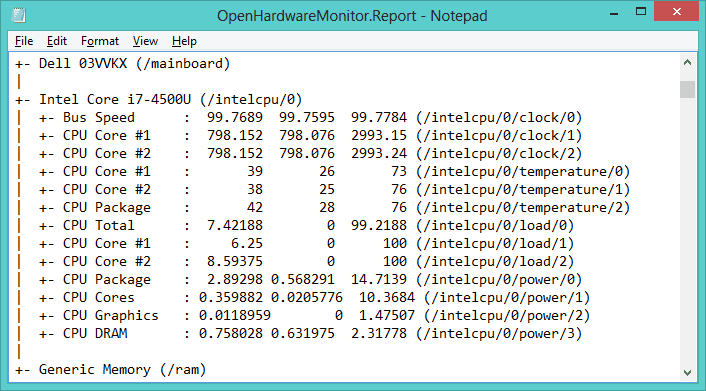

- HARDWARE TEMP MONITOR WINDOWS 10 HOW TO
- HARDWARE TEMP MONITOR WINDOWS 10 WINDOWS 10
- HARDWARE TEMP MONITOR WINDOWS 10 PC
- HARDWARE TEMP MONITOR WINDOWS 10 WINDOWS 7
The hotkeys that you need to tap to access the boot menu are either DEL or more universally, F2. Upon hitting the hotkey, your system will take you to the UEFI/BIOS page instead of the normal Windows start-up page.
HARDWARE TEMP MONITOR WINDOWS 10 PC
When your PC or Laptop is starting up, there is a small window between the logo appearance and the loading of the Windows start-up page when you need to continuously hit the hotkey that is specific to your system manufacturer. of Option 1.1: Open BIOS with Hotkey when your system is booting up So, open the BIOS screen by pressing the right hotkey when your PC shows you the logo when it is booting up, or, using the Start Menu for this. And yes, you only need to open the BIOS screen to check the CPU temp displayed by it. Here are the two easy methods to open BIOS on your Windows PC.
HARDWARE TEMP MONITOR WINDOWS 10 HOW TO
This gets you data right Here’s how to go about it: How to open bios on Windows 11


Instead, you’ll have to check the thermal status for your system from the BIOS/UEFI of your PC. Unfortunately, there’s no native way to check CPU temperatures on Windows 11. But when you do not need to be geeky enough, checking the CPU temp through app will do just right. You can check the raw output provided by your PC’s motherboard through BIOS, thus not depending on an app when you are really into it. Related: How to Fix Windows Search High CPU or Disk Usage on Windows 11 How to check CPU temperature on Windows 11 Knowing the exact CPU temperatures will ensure that you can take the proper steps at the right time to rein in the problem. Higher than average thermals invariably lead to a drastic reduction in performance, an increased likelihood of crashes, and, eventually, an out-and-out demise. And its internal temperatures need to be monitored periodically to ensure that the show doesn’t end up in flames. The CPU is the core of your computer, the puppet master that runs the whole show from the background, receiving instructions and dealing out the processing power required to keep the whole shindig going. Why do you need to monitor your CPU temp?

Your motherboard may also have a number of CPU temperature sensors. You may see multiple temperature readings for your CPU, typically each CPU core has its own temperature sensor as well as an independently positioned package sensor. Tip: You can select multiple entries to display at the same time. The first is to right-click on the specific entries that you want to see on your desktop and click “Show in Gadget”. There are two things you need to do to display CPU temperatures.
HARDWARE TEMP MONITOR WINDOWS 10 WINDOWS 10
How to display CPU temperature on the Windows 10 Desktop
HARDWARE TEMP MONITOR WINDOWS 10 WINDOWS 7
It also includes a feature that allows it to display these stats on the desktop in the format of an old school Windows 7 Gadget. One of the key bits of data that it can collect and display is the temperature readings from your CPU as well as your GPU. For example, it can track the clock speed of each of your CPU cores, as well as their utilisation rates. Open Hardware Monitor is a tool that monitors and reports a number of hardware statistics for your computer.


 0 kommentar(er)
0 kommentar(er)
